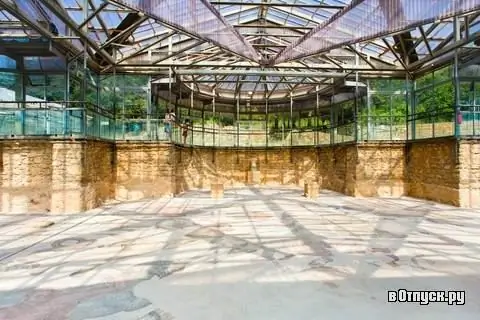
Description of the attraction
Villa Romana del Casale, located a few kilometers from the town of Piazza Armerina in Sicily, is an ancient Roman palace built at the beginning of the 4th century AD. on the foundations of an older building. Once it was the central building of a large estate and had a very luxurious interior decoration. The largest and most elaborate Roman mosaics in the world have survived to this day, which adorned the rooms of the villa. Today, Villa del Casale is protected as a UNESCO World Cultural Heritage Site.
Historians suggest that the villa played its role for about one and a half hundred years after construction, and then was abandoned for a long time. A small village has grown up around it, called Platia (from the word "palatium" - a palace). During the rule of the Visigoths in Sicily, the villa itself was destroyed, but various outbuildings were still used for some time. Only in the 12th century this place was finally abandoned when the villa was buried under a landslide.
Only at the beginning of the 19th century, fragments of mosaics and some fragments of columns were discovered here, and in 1929 the first official archaeological work was carried out under the leadership of Paolo Orsi. In the 1930s, Giuseppe Cultrera continued his work. The last major excavations took place in the 1950s and 1960s, which resulted in the erection of a dome over the mosaics.
Most likely, the villa performed several functions at once. Some of her rooms were completely residential, others served as administrative premises, and the purpose of some of the rooms remains unknown. Probably, its owner lived here permanently or almost permanently, who also managed his estate from here. The building had one floor. In its northwestern part there were baths, in the north - rooms for guests and servants, and in the east - the private apartments of the owners and a large basilica.
In 1959-1960, archaeologist Gentili, who carried out excavations at the villa, discovered on the floor of one of the rooms a mosaic depicting ten girls - she was called "bikini girls". Young girls are presented in the form of athletes who are involved in running, ball games, discus throwing, etc. One of them is dressed in a toga and topped with a crown, and the other holds a palm branch in her hands. Another well-preserved mosaic depicts a hunting scene with a hunter and dogs.






